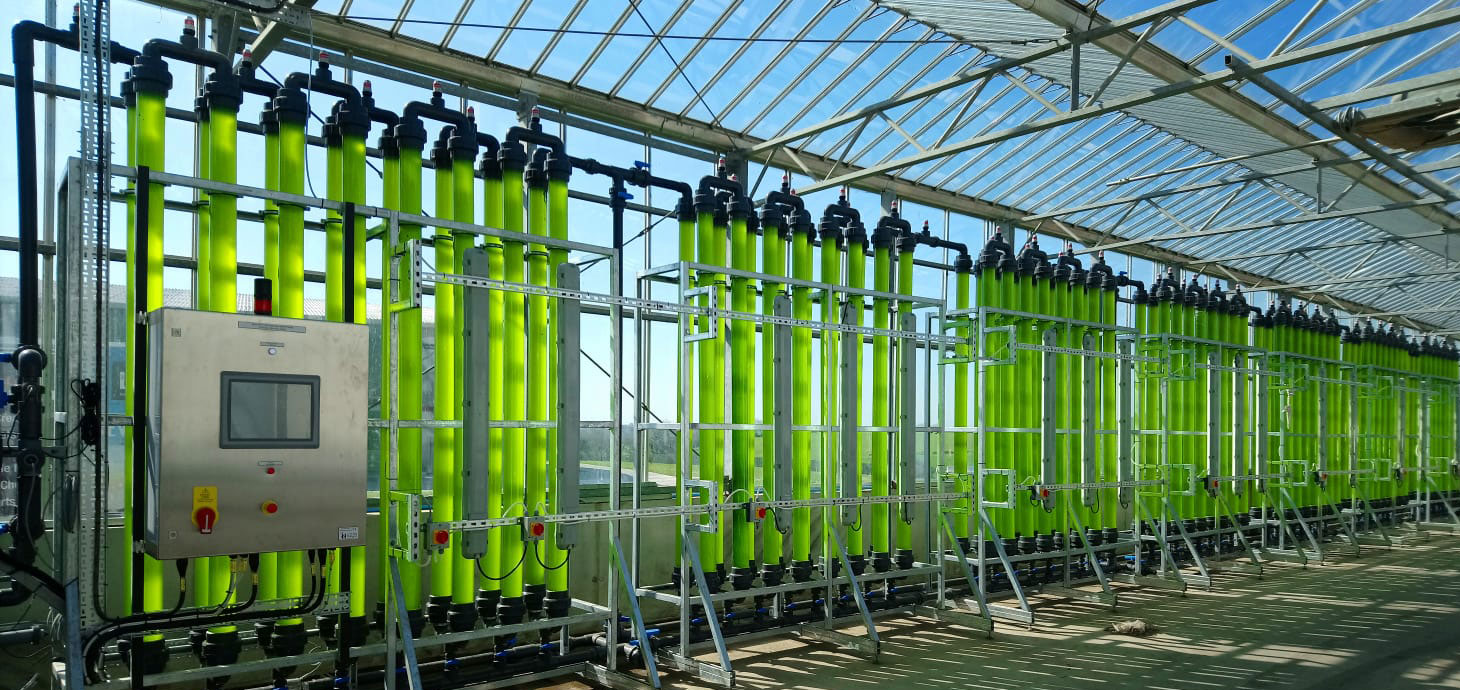
A team of researchers from Swansea University is collaborating with European partners to use the nutrients in digestate produced from food and farm waste to cultivate microalgae. The resulting microalgal biomass which is rich in protein and other useful compounds has been used as an ingredient in animal and fish feed trials.
The ALG-AD project, funded by Interreg North-West Europe, is led by a team in the Bioscience Department in Swansea University’s Faculty of Science and Engineering.
Professor Carole Llewellyn overall leader on the project said: “Microalgae are amazing photosynthetic microorganisms found naturally in oceans and lakes where they already form an essential part of the planet’s ecosystem. Our work is exploring and developing innovative ways in which they can be used to use waste nutrient streams to generate sustainable products.”
Food and farm waste is typically treated at specific sites using a process called anaerobic digestion. This converts waste into biogas, used for energy, and produces a nutrient rich digestate, most of which is returned to land as a biofertiliser. However, there are strict legal limits on how much of this can be used on land due to pollution risks. These restrictions increasingly result in excess unwanted nutrient digestate, which can be difficult and costly to store or dispose of in a safe way.
Researchers have developed processing and cultivation techniques which maximise the nutrient uptake from digestate and prevent the nutrients from otherwise going to waste. The resultant algal biomass can be used to generate sustainable products – not only as a feed ingredient but also potentially as an agricultural bio-stimulant, or other high value compounds can be extracted for alternative applications.
Analysis has so far indicated that microalgae grown on digestate are even richer in proteins compared to when cultivated on standard media. Therefore, the team is keen to explore the market potential of this biomass. Further potential for the biomass is yet to be fully explored.
For farmers, algae can deliver a nutritional source of feed for livestock – storable and non-contaminating, resistant to decomposition, portable and economic. In its hydrolysed form it can be used to strengthen immunity as an alternative to antibiotics. Secondly, it is a solution for tackling excess food and farm waste – and working together these two factors combine into a formula for a sustainable circular farm economy.
Dr Alla Silkina, an algal biotechnologist working on the project, said: “The ALG-AD project has allowed us to test and develop innovate technology at an industrially relevant scale at three sites across Europe; at Langage AD in the UK, Innolab in Belgium and Cooperl in France. Despite differences in location, quality of digestate, operating procedures and design, all three facilities are successfully growing microalgae. We are now looking to deploy the technology more widely.”
The aim is for the new approach to be adopted by sites initially across Northwest Europe, which is a densely populated and intensely agricultural area, and thus contributes disproportionately to food and farm waste produced in the EU each year. This will not only reduce the pollution risk from nitrates spread on land, but will also provide a locally cultivated, sustainable alternative to soya. The team is also developing decision support tools and best practice guides to help others develop and adopt the new technology.
Professor Carole Llewellyn, said: “Microalgae have a remarkable capacity to use what we don’t want, namely excess nutrients and CO2, and produce what we do want, namely sustainable products. They provide a very attractive solution to many of the societal challenges we face in terms of nutrient pollution and in terms of the increasing need to live more sustainably.”
